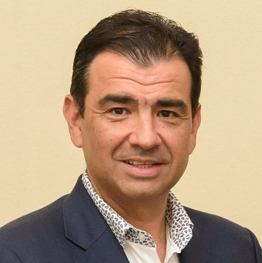New materials and digital connectivity will drive tax stamp growth in 2018, says the International Tax Stamp Association (ITSA). The industry trade body believes that the next 12 months will see continued innovation across an increasingly diverse sector as tax stamps evolve to meet demand, creating new markets and wider scope for the technology’s application on more products.
The ease of linking the stamps to digital traceability and associated mobile apps will ensure ever better data to tax authorities and rights holders and certainty of authenticity to consumers, according to the ITSA.
Chair of ITSA Juan Yañez, pictured, said: “2018 promises to be another year of rapid developments for all of us involved in the tax stamp sector. We will see innovation in tax stamps continue to be the key to unlocking a greater contribution to the fight against fraud and protecting citizens. Moreover, the technology’s adaptability will drive closer integration with traceability and data driven systems, revealing the potential for big data and other large volume data capture applications.”
Tax stamp usage beyond securing excise revenue collection applications will continue to pick up, the ITSA suggests. For example, a fiscal stamp issued by the National Seeds Institute of Argentina (INASE) promotes safety by protecting farmers from fake seeds and aiding traceability. In other industries, oil products will see greater adoption of molecular markers as protective in-product tax stamps, while the need to better control sugary drinks will see technology applied to monitoring them.
In Europe, the EU is close to adopting regulations for track and trace, security features and data storage, as proposed under the EU Tobacco Products Directive (TPD). But there are continuing discrepancies between the TPD and the WHO Protocol which the EU has ratified and which is expected to come into force mid-year. If EU member states and MEPs do not move to correct this, they could face legal challenges and set a poor example to developing countries with fewer resources to design the required control the trade body says.
A new international tax stamp standard (ISO 22382) in 2018 – supported by ITSA – will come against the backdrop of a global market where some countries or regional states have stamp programmes for collecting tax, while large parts of the world possess little or indeed no tax stamps.
The move will raise the bar for the broader sector and facilitate a strong degree of parity and harmony – all countries using stamps, and those not using them, will benefit from access to programmes that are in line with the best and most effective on the market.
ITSA says more eye-catching and ‘playful’ authentication will engage and empower the public. The union of physical and digital features will be further developed throughout 2018, said Juan Yañez, ensuring that the combined objectives of authentication, traceability and tamper-evidence is achieved.
He added: “The global fight against fraud will intensify in 2018, driving the need for global solutions for excise and revenue collection systems. We will also see tax stamps’ role in the acquisition and distribution of information continue to develop, particularly when authentication and traceability systems are aligned with CRM and marketing applications. There’s no question the technology will provide effective solutions for tax collection, product authentication and secure track and trace and will continue to succeed in the next 12 months and beyond.”









